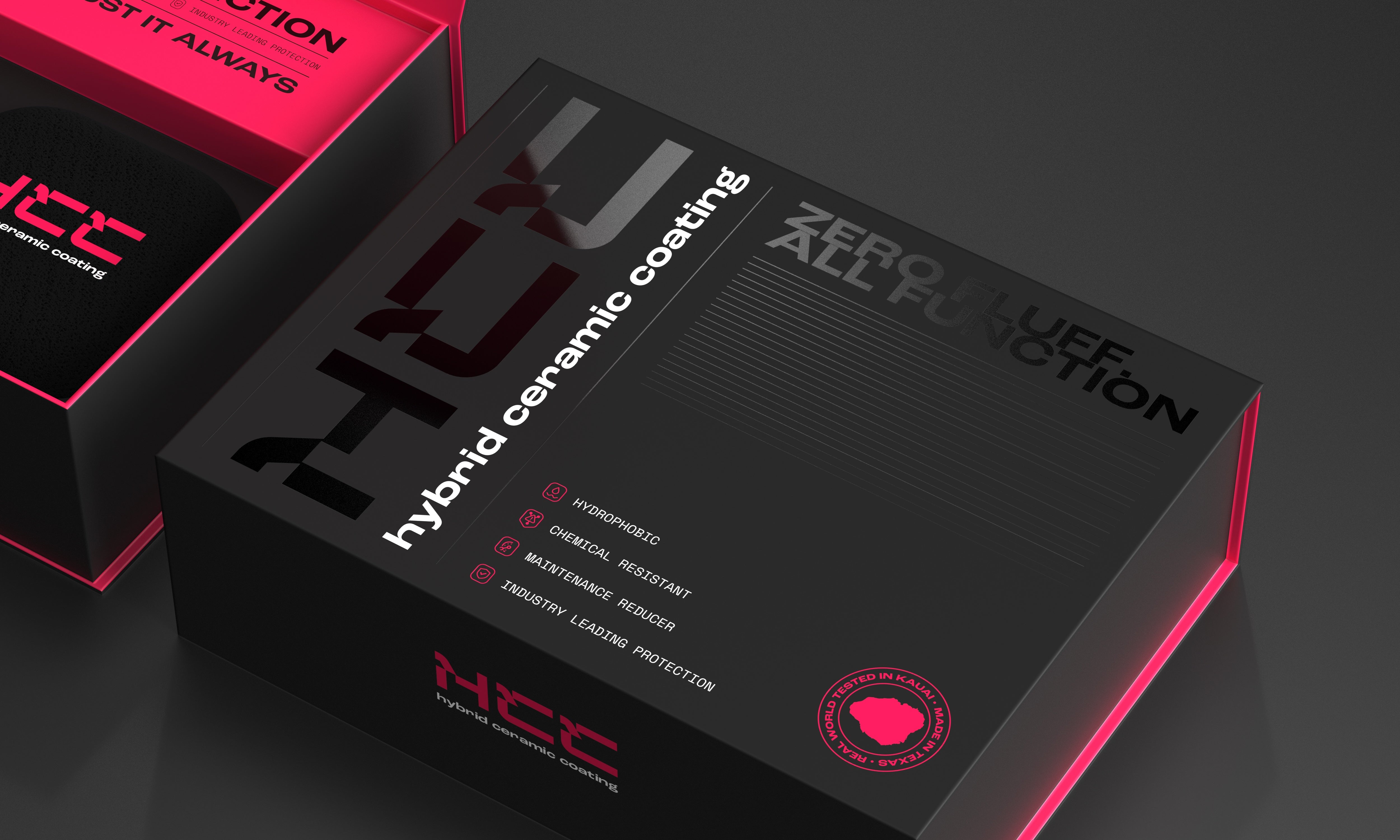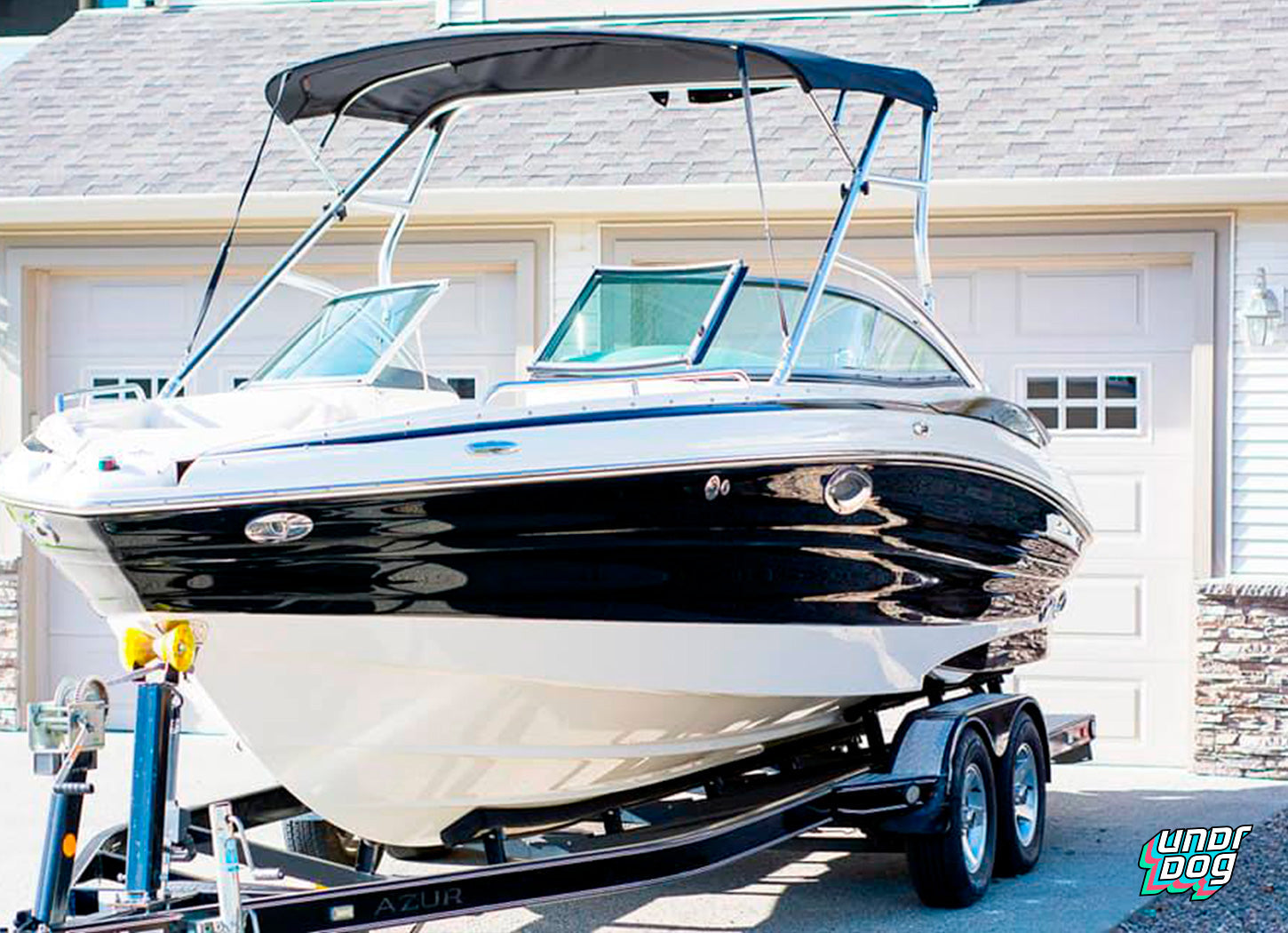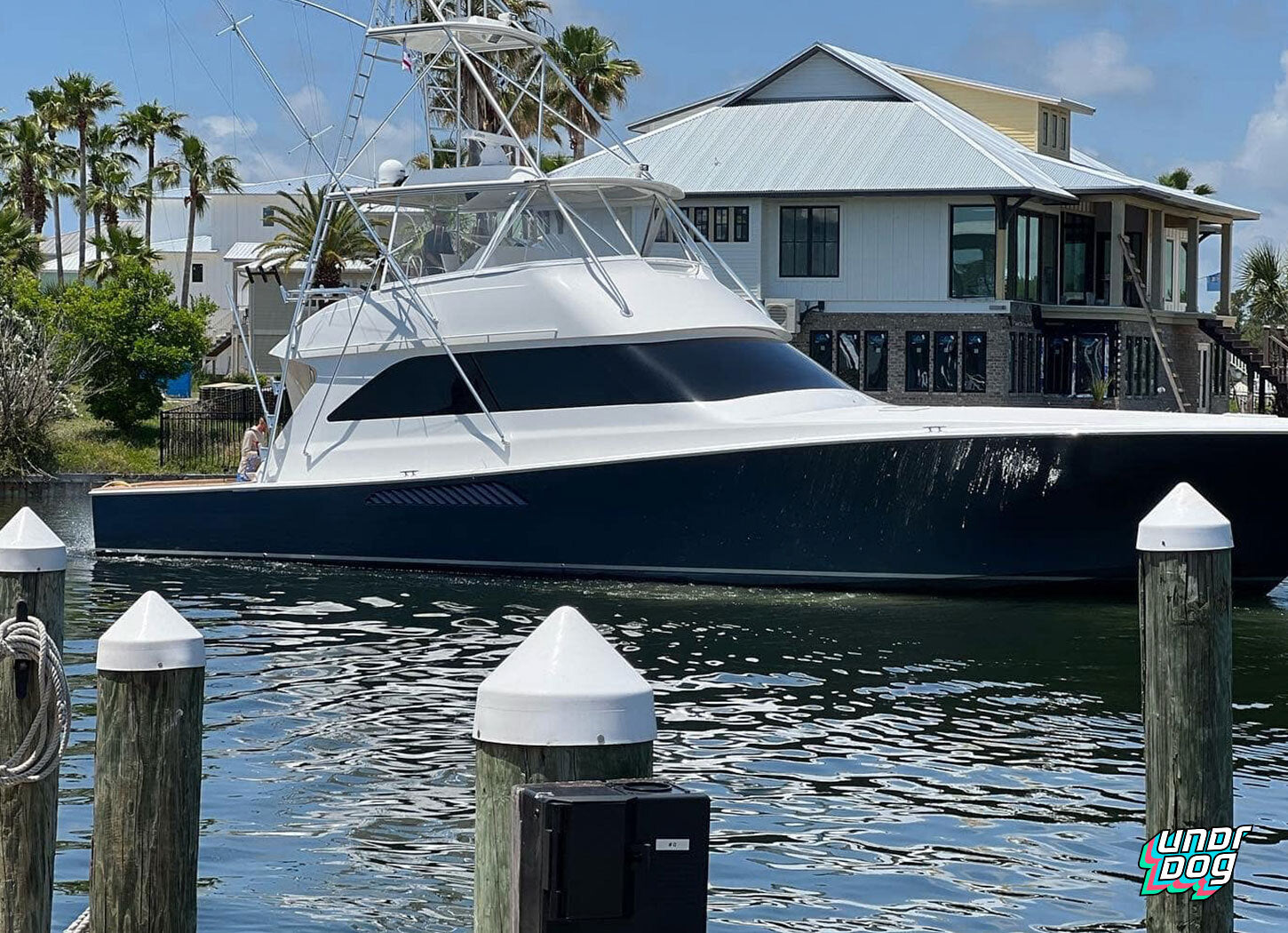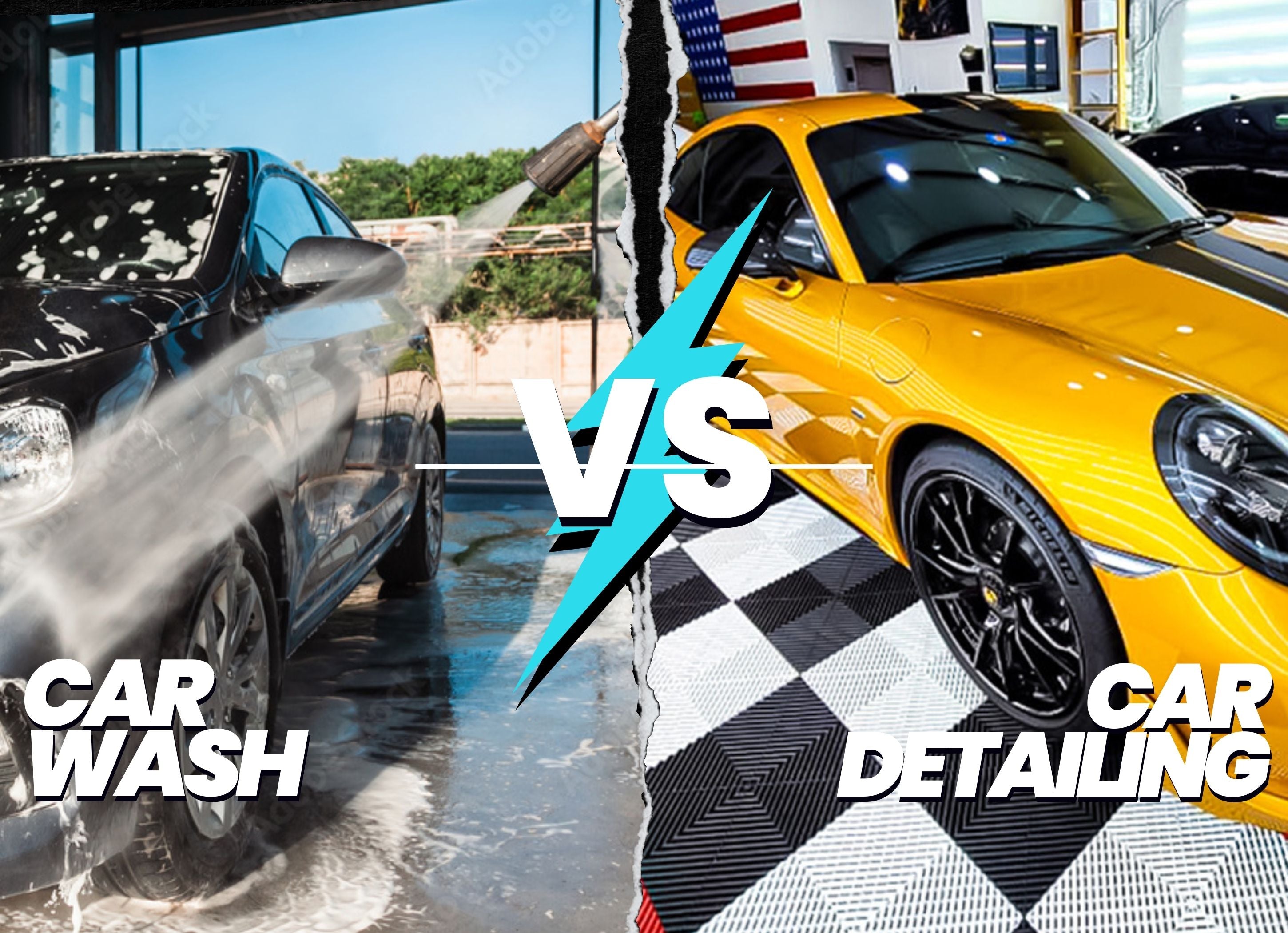Table of Contents:

Howdy sea dogs and landlubbers alike! If you've been around the marina lately, you've probably heard the old salts yammering on about this newfangled thing called coating.
Wax? That's as outdated as a treasure map, matey. These days, it's all about protective coating. Unless you've been living under a barnacle-encrusted rock, you've likely heard of it. But knowing about it and knowing how to apply it are two different kettles of fish.
So, buckle up. We're about to dive into the nitty-gritty of protective coating application and turn all y’all DIY deckhands and greenhorns into bona fide experts.
Ready to set sail? Let's weigh anchor and get started!
What Is Protective Boat Coating?
What in tarnation is protective coating? Think of it as a kind of invisible shield that’s as tough and slick as it gets.
Protective coating is a liquid polymer that chemically bonds with your boat's paint, creating a sacrificial layer of protection. It's not just a surface-level buddy, oh no. This stuff gets right down to the molecular level, forming a bond that's tighter than a cowboy's lasso/banker’s purse/snare drum’s skin.
Why should you give a hoot about protective coating?
First off, it's a champ at blocking harmful UV rays and oxidation, which can fade your boat's color and jeopardize your gel coat.
Then there's the protection against all sorts of nasty contaminants and pollutants.
We're talking bird droppings, saltwater, acid rain, fish guts, dock scratches, harsh marine environment, corrosion, and even those pesky barnacles that cling to your hull like a tick on a hound dog.
But wait, there's more! Protective coating makes cleaning your boat as easy as pie. Dirt and grime will slide right off, leaving your vessel looking as shiny as a new dime.
And let's not forget about the enhanced appearance. Your boat will have a gloss that'll make it the envy of the marina.
And the cherry on top? Protective coating is a real time-saver. No more spending your weekends detailing, polishing, or restoring your boat. With protective coating, you're preventing problems before they start.
And as any wise sailor knows, an ounce of prevention is worth a pound of cure. So, are you ready to give your boat the protection it deserves? Let's mosey on to the next step.

How To Prepare Your Boat For Coating
Now, before we get to slapping on that protective coating, we've got a bit of prep work to do. Just like you wouldn't paint a barn without cleaning it first, you don't want to apply protective coating to a dirty boat. So, let's roll up our sleeves and get to work.
Detailing Her
Start by giving your boat a thorough cleaning to remove any dirt, grime, or salt. Then, dry it off completely. Any existing wax or sealants on the surface? Those have got to go. You want the protective coating to bond directly with your boat's surface for the best protection.
You're going to want to give your boat a thorough cleaning. And I mean thorough. We're not just talking a quick hose down here. You're going to want to scrub every inch of that vessel until it's cleaner than a preacher's Sunday best. Use a high-quality boat cleaner to get rid of any dirt, grime, and salt deposits. Don't forget to pay special attention to those hard-to-reach spots. They can be real troublemakers if left unchecked.
Polishing Her
Once your boat is as clean as a whistle, it's time to move on to the next step: decontamination. Now, this might sound like something out of a sci-fi movie, but it's actually pretty straightforward. You see, over time, contaminants can embed themselves in your boat's paint. These can include things like metal particles, tar, and tree sap. A clay bar or a clay mitt can be used to remove these contaminants and leave your paint feeling as smooth as a baby's bottom.
Next up, we've got to deal with any existing scratches or swirl marks. These little buggers can really put a damper on your boat's appearance. Fortunately, a bit of polishing should take care of them. Just remember to take it slow and steady. You don't want to rush this step.
Decontamination
Now, once your boat is clean, decontaminated, and polished, it's time for one final step before applying the protective coating: wiping down the boat with isopropyl alcohol (IPA). This will remove any oils or residues left over from the cleaning and polishing process. It's like giving your boat a final once-over before the main event.
Alright, now that your boat is prepped and ready to go, it's time to move on to the main event: applying the protective coating.
But remember, preparation is key. A protective coating is only as good as the surface it's applied to. So take your time, do it right, and your boat will be looking sharp and shiny for years to come.

How to Apply Protective Coating to Your Boat
Alright, y'all, we've done the prep work, and now it's time to get down to the main event: applying that protective coating. Now, don't let the fancy name intimidate you. Applying protective coating is as easy as pie if you follow these steps.
Set up your workspace
First off, you're going to want to make sure you're working in the right conditions. That means a clean, cool, well-lit space, preferably out of direct sunlight. Btw, if you use Undrdog Marine Pro, you don’t have to worry about this because you can apply it in direct sunlight. Also make sure that your area is contamination free.
You don't want any dust or debris messing up your hard work and getting between your gel coat and the coating. And don’t forget to wear gloves and a face mask when working with chemicals.
Once you've got your workspace set up, it's time to get started.
The Tools You’ll Need
You'll need a few things on hand:
- Coating
- Brand new microfiber towels
- Applicator pads
- Timer
- Gloves
- Face Mask
This stuff can be a bit sticky. Thus the safety equipment.
How to Apply the Coating
Once that's done, apply 15-20 drops onto your applicator pad. You don't need too much. A little goes a long way with this stuff. Ideally, the pad will be damped in coating throughout the entire process. Make sure to keep it damped and add drops to it constantly to maintain an even coating.
Start applying the coating to your boat in a cross-hatch pattern. That means vertical and horizontal overlapping lines. This ensures even coverage and helps avoid any high spots. Work in small sections, about 2x2 feet at a time. This will help you keep track of where you've applied the coating and ensure you don't miss any spots.
I recommend that you start on the roof of your boat and work your way down to the hull and around your vessel.
Complete as much as you can within a 7-10 minute time frame (yes, you will need a timer too).
Let It Sit and Flash
After you've applied the coating to a section, let it sit for 7-10 minutes. This is called the "flash time," and it's when the coating starts to bond with your boat's surface. You'll know it's ready when it starts to look rainbow or oil-slick-like. Once you’ve coated the area and it’s flashed, you may begin wiping. You’ll want to use at least three towels for this.
By the way, flashing time will differ from one product to another so always make sure to check your product's label to find out how long you’ll need to wait.
Buff It Off
Once the coating has flashed, it's time to buff it off. Using a clean, dry microfiber towel, gently wipe the coated area. You want to remove any excess product and smooth out the coating.
Make sure to switch out your towel for a fresh one regularly. You don't want to drag around excess product. One towel is for wiping, the other for buffing and the third one is for final wiping that removes any residue.
Repeat the Process
Repeat this process until you've coated your entire boat. It might seem like a lot of work, but trust me, the results are worth it.
Let It Cure
Once you're done, you'll need to let your boat cure for about 24 hours. This means no water or dust should come in contact with the surface. This is crucial for achieving that hard, protective layer. After that, your boat will be ready to hit the water with its new, shiny, and protected surface.
And there you have it, folks! Applying protective coating to your boat isn't rocket science. It just takes a bit of time, patience, and elbow grease. But the payoff is a boat that's protected, easy to clean, and looks darn good to boot.
Maintaining Your Boat's Protective Coating
Alright, y'all, we've got that shiny new protective coating on your boat, and it's lookin' as pretty as a Texas sunset. But don't go thinking the work stops there.
A protective coating is a big step up from wax, but it still needs a little TLC to keep it in tip-top shape. So, let's talk about how to maintain that beautiful, protective layer on your vessel.
First things first, you're going to want to keep her boat clean.
Wash your boat regularly to maintain the coating in a shipshape condition
Now, I know what you're thinking, "But I just put this coating on to make cleaning easier!" And you're right, it will. But that doesn't mean you can skip out on washes. Regular cleaning helps prevent contaminants from bonding to your coating.
Use a pH-neutral, protective coating-friendly soap to avoid damaging your coating. And remember, no harsh scrubbing. The coating is doing the heavy lifting, so just a gentle wash will do.
Spray on and rinse off to keep it glossy
Next up, consider a maintenance spray. These are designed to work with your protective coating, enhancing its hydrophobic properties and keeping your boat looking glossy. They're easy to apply after a wash while your boat is still wet. Just spray on and rinse off. It's like a little booster for your coating.
Now, even with the best care, your protective coating may start to lose a bit of its luster over time. Don't panic, it's normal. When this happens, it's time for a decontamination wash. This involves using a clay bar or mitt to remove any bonded contaminants. Follow up with a maintenance spray, and your coating will be back to its old self.
Polish and reapply if needed
Finally, remember that while a protective coating is tough, it's not invincible. If you notice any chips or scratches, get them fixed promptly. Your coating is there to protect your boat's surface, but it can't do its job if it's damaged.
So there you have it, folks. A little care goes a long way in maintaining your boat's protective coating. It might seem like a bit of work, but trust me, it's worth it. After all, we want your boat to stay looking as good as the day it left the dock. Taking proper care of yer coating is the way to achieve that.

Common Myths and Misconceptions About Protective Coating
Now, I've been around the marina long enough to hear some tall tales. Sailors like to tell them and obviously, there’s a fine line between a detailer and a sailor (if there is a line at all). There are plenty of myths and misconceptions floating around about protective coatings, so, let's set the record straight, shall we?
Myth 1: Protective coatings are bulletproof
First off, let's get one thing clear: protective coatings are tough, but they're not invincible, nor are they bulletproof. They offer superior protection against UV rays, oxidation, and contaminants, but they're not going to stop a rogue fishing hook or a bump against the dock from leaving a mark. They're a protective layer, not a suit of armor. We sometimes like to refer to them as such, and I too am guilty of that, but that’s just a figure of speech. You know that, do you? Well… now you do.
Myth 2: Protective coatings mean no more cleaning
Hah, in yer dreams! I wish this one were true, but sadly, it's not. While a protective coating does make cleaning easier and less frequent, it doesn't eliminate the need for it entirely. Regular washing with a protective coating-friendly soap is still necessary to keep your boat looking its best.
Myth 3: protective coatings are permanent
Protective coatings are long-lasting, but they're not forever. Depending on the product, the conditions your boat is exposed to, and how well you maintain the coating, you can expect it to last anywhere from 1 to a couple of years. After that, it's time for a new application.
Myth 4: All protective coatings are the same
Not all protective coatings are created equal. There are different grades and types, each with its own set of properties and benefits. It's important to choose a high-quality product and a reputable installer to get the best results.
So there you have it, folks. Don't let these myths steer you wrong. A protective coating is a fantastic way to protect your boat and keep it looking great, but it's not magic. With the right expectations and proper care, though, it's the next best thing.
Wrap Up
So there you have it, folks, protective coating is a game-changer for boat maintenance, providing a level of protection that's hard to beat. It might take a little time and effort to apply, but trust me, it's worth it.
Your boat will thank you, and so will your wallet when it comes time to resell. So why wait? Give your boat the protection it deserves with a protective coating worthy of her gloss. Happy boating, y'all!





Leave a comment
This site is protected by hCaptcha and the hCaptcha Privacy Policy and Terms of Service apply.